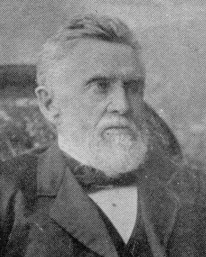

![]()
|
|
|
JOHN HOSSACK
| Henry Lens Hossack's Letter of 1917: Another First-hand Account. Slavery was introduced by the French and as early as 1744 was well established in the French settlement around Kaskaskia. When Illinois was admitted into the Union as a state on December 3, 1818, the first state constitution contained a clause prohibiting slavery. Yet the legislature in 1819 enacted the "Black Law" which was a confirmation of the existing system. Before Illinois became a state the kidnaping of Negroes was begun and by 1822 was carried to such an extent that the press protested. The majority of the people of the northern and central parts of the state sympathized with the Negroes, and many did all they could to assist them to freedom. In 1835, the Underground Railroad was established. The period of greatest activity of the system in this state was between 1840 and 1861. The origin of the term has been traced to the expression of a Kentucky planter who, having pursued a fugitive across the Ohio River, was so surprised by his sudden disappearance as soon as he had reached the opposite shore that he was lead to remark, "the nigger must have gone off on an underground railroad." This system was operated by some of the most prominent men in their localities. Those living in Lisbon were John Moore, George T. Norton, Zenas McEwen, Eben Hills, Edward Wright, Thomas Wright, and Dr. Gilman Kendall. Through the courtesy of Mr. H. L. Hossack of Ottawa (Illinois) the method is described. Ottawa, Illinois, January 1, 1917 Mrs. J. L. Shufelt, Dear Madam: I know nothing except hearsay about the pioneer days of Lisbon. As to the Underground Railroad, I know something about that as I was a conductor on that road, having several times driven father's team to Harding or to Newark carrying escaped slaves on their way to Canada and freedom. When fugitive slaves crossed the Ohio River there were various routes traveled through Illinois and Indiana, varying somewhat on account of the slave catchers being more active in one locality than in another. Commencing at the Ohio river the Abolitionists there would send them forth to another Abolitionist farther north. He in turn would secrete them and speed them on to freedom. From here we generally took the slaves to Harding or Newark, Father had a closed carriage and I or one of my brothers drove the slave, secure from observation in the back seat, and we traveled at night and secretly, hence the name "Underground Railroad." Often it was necessary, especially in the southern part of the state, to secrete the slave a few days until the vigilance of the slave catchers should relax, and there were frequently posters and descriptions of escaped slaves or "runaway slaves" scattered around the towns before the poor slave arrived here, then we had to be extremely careful, as the large rewards offered were tempting to the unprincipled men: they did not care particularly to send the slave back to bondage but were after the money. If a slave was captured he was assisted to again escape by the Abolitionists. I do not know of a case where the slave got this far that he was ever taken back to slavery. I recollect one poor slave that was captured near Joliet and was being taken south on the packet on the Illinois and Michigan Canal. We had no railroads then. Father was on the packet returning from Chicago. He rushed into the Free Church, as it was called - - all the other churches were more or less pro slavery. He stopped the preacher and called for volunteers to go to the lock, two miles from town, and rescue the man from bondage. The rescuers overtook the packet in the second lock but the Negro had already gone. The packets were much smaller than the lock: the steersman had run the boat close to the north side when the Negro jumped off and ran. The boat swung to the south side of the lock and the officers could not get off to catch him. They fired several shots at him but missed their mark. Yours truly, H. L. Hossack The source contains more information on the John Moore-Emma Delight Hossack line. Emma was the daughter of Henry Lens Hossack and granddaughter of John Hossack of Ottawa. The full content from which the above was excerpted can be had from the source below. When Lisbon Was A Prairie Early History - When Lisbon Was A Prairie The Following Is An Interesting History Of the Early Days Of Lisbon, A Village In The Southwestern Part Of Kendall County Written by Mrs John L. Shufelt in 1917 Originally published in the Kendall County Record, at Yorkville, Illinois, as a four part series. Publication dates were: January 24; January 31; February 7; and February 14, 1917. Edited and compiled by Elmer Dickson. http://rootsweb.com/~ilkendal/TownHistories/Lisbon/LisbonPrairie.htm
|
|
|